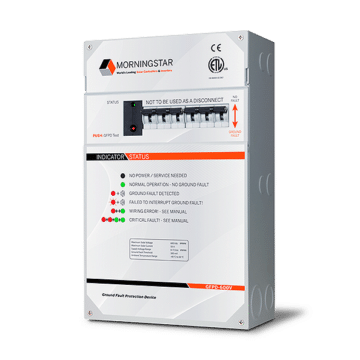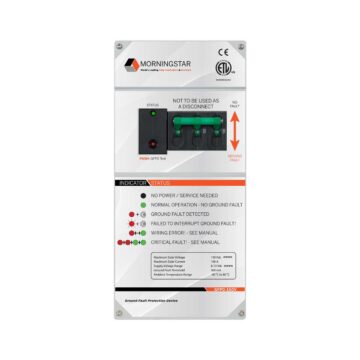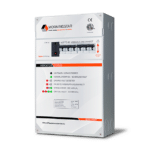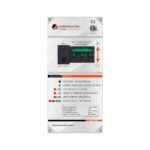Ground Fault Protection Device
Morningstar’s Ground Fault Protection Device™ (GFPD) prevents current from following any unintended paths during a ground fault. Other ground fault detection/interruption products break the bond to the grounded conductor. When this occurs, not only is the earth bond compromised, but the battery and DC loads can also be left ungrounded and floating. For a negatively grounded system this means that the negative side of the battery and loads can float to negative Voc in relation to ground and the positive side can float to (negative Voc + Vbat). Morningstar’s GFPD better isolates the array from the battery and loads, while maintaining the bond to ground. Compatible with:
Models: GFPD-150V, GFPD-600V,
Specifications and Certifications by Model
| Model | GFPD-150V | GFPD-600V |
|---|---|---|
| Maximum Solar Voltage (Voc) | 150 volts | 600 volts |
| Maximum Solar Current (Isc) | 85A | 50A |
| Nominal Battery Voltage | 12, 24, 36 or 48 Vdc | 12, 24, 36 or 48 Vdc |
| Supply Voltage Range | 10-72 Vdc | 10-72 Vdc |
| Self Consumption | <0.5W | <0.5W |
| Ground Fault Threshold Current | 300 mA +/- 10% | 300 mA +/- 10% |
| Number of Poles | 2 | 2 |
| Trip Method | Relay | Relay |
| Output Trip Signal | 12V | 12V |
| Operating Temperature Range | -40 C to +50C | -40 C to +60C |
| Warranty | 5 Years | 5 Years |
| CE and RoHS compliant | Yes | Yes |
| UL1741 and CSA C22.2 No. 107.1-01 Listed | Yes | Yes |
| UL-489 Listed | Yes | No |
| UL-1077 Listed | No | Yes |
| FCC Class B Part 15 Compliant | Yes | Yes |
| U.S. National Electrical Code (NEC) 690.5 Compliant for use as a GFPD device |
Yes | Yes |
| Manufactured in a Certified ISO 9001 Facility | Yes | Yes |
- Disconnects both the positive and negative conductor and completely isolates PV source circuits
- Trips at 300mA compared to 1A for alternative solutions
- Provides design flexibility to accommodate large and small array configurations
- Uses high quality breaker solutions rather than fuses which are problematic to replace at remote sites
- Works like a traditional AC GFI
- Maintains the integrity of earth bond for battery and loads
- Does not require an extra warning label at the battery per U.S. National Electric Code requirements
- Makes it easier to locate and troubleshoot ground faults
- Powered via the pv system’s battery
- Equipped with both visual and audible alarms
- Built to support both single controller and multiple controller systems
- When the earth bond is not broken, Morningstar’s GFPD will only shut off affected controllers
- All loads will continue to operate safely with the battery remaining bonded to ground
- Multiple controllers and GFPDs can be added on an as-needed basis





